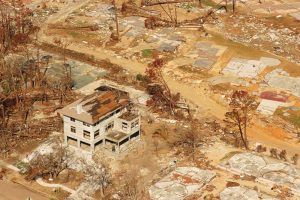
Natural disasters, such as hurricanes and tornadoes, are inevitable throughout North America, leaving millions of homes exposed to damaging winds and weather conditions. Lasting a few hours to days, damage from these disasters takes years to fully repair infrastructure, rebuild homes, restore buildings, and get families and communities back on their feet.
For example, a December 2021 storm that barreled through Kentucky and neighboring states spawned at least 66 tornadoes, resulting in 89 deaths and more than 11,700 damaged buildings. In less than two days, the twisters caused approximately $2.9 billion in reconstruction costs.
This catastrophic storm, and others like it, may be unavoidable, but there are building design and construction methods to minimize property damage and save lives when a storm does strike.
One of these construction methods is insulated concrete forms (ICF). An ICF is a type of concrete formwork designed to remain in place as part of the permanent construction of a building. Primarily used for exterior walls, ICF assemblies comprise two layers of rigid insulation connected by webs to establish the core width and provide a hollow center. Once the ICFs are stacked, reinforcing bars are placed inside and concrete is pumped and consolidated to create a monolithic concrete core.
Resilient design to strengthen infrastructure
What if an impending hurricane or tornado did not have to mean total destruction? Constructing new buildings or reinforcing existing structures in accordance with principles of resilient design can reduce risks and ensure properties and occupants are protected in the face of extreme weather.
Resilient design is the proactive process of designing and constructing buildings, landscapes, and entire neighborhoods to mitigate the impact of environmental and external hazards, while maintaining livable conditions. According to the Resilient Design Institute (RDI), these design practices help “respond to natural and manmade disasters… including sea level rise, increased frequency of heat waves, and regional drought.”1




